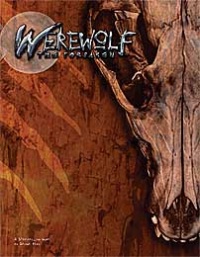
| This Rite can now be performed by a ritualist for another Uratha, or even a group of them; allowing those who do not have two dots in Rites to make a formal apology.
|
The Rite of Contrition is performed by any werewolf who wishes to apologize to another being for an act of dishonor. The rite can be performed in supplication to another werewolf or a spirit. In the case of truly powerful entities, such as Incarnae or Celestines, the subject of the rite does not need to be present and it’s assumed that that spirit receives and understands the ritualist’s contrition. The ritualist might not truly be sorry for what he’s done, and the offended party might not be content with an apology no matter how effusive it is, but once this ritual has been performed, all witnesses are bound by honor to the idea that the ritualist has truly apologized to the best of his ability. The Rite of Contrition isn’t used for trivial offenses or errors in etiquette. It’s intended to help rectify real offenses, such as violating a totem’s ban or destroying a valued servant of the spirit in question.
Performing the Rite
This ritual takes several minutes to perform. The ritualist chooses a sort of spirit known to be favored by the subject of the rite — perhaps a pack totem or one of its spirit brethren. Unless the spirit is powerful enough to perceive the rite’s effects from a distance (as with an Incarna-level spirit or greater), the spirit must be present for the rite, although it may be on the other side of the Gauntlet.
An appropriate food sacrifice is made to the spirit; a handful of the food in question is burned as an offering. The ritemaster then describes in humble language the offense or crime he committed and begs forgiveness from the subject in the First Tongue while exposing his bare neck. The subject of the rite may respond — the ritual response is Ss’uthaf, “I accept you.” The subject may choose not to respond (represented by turning his back on the ritualist), but that response isn’t required or magically imposed.
